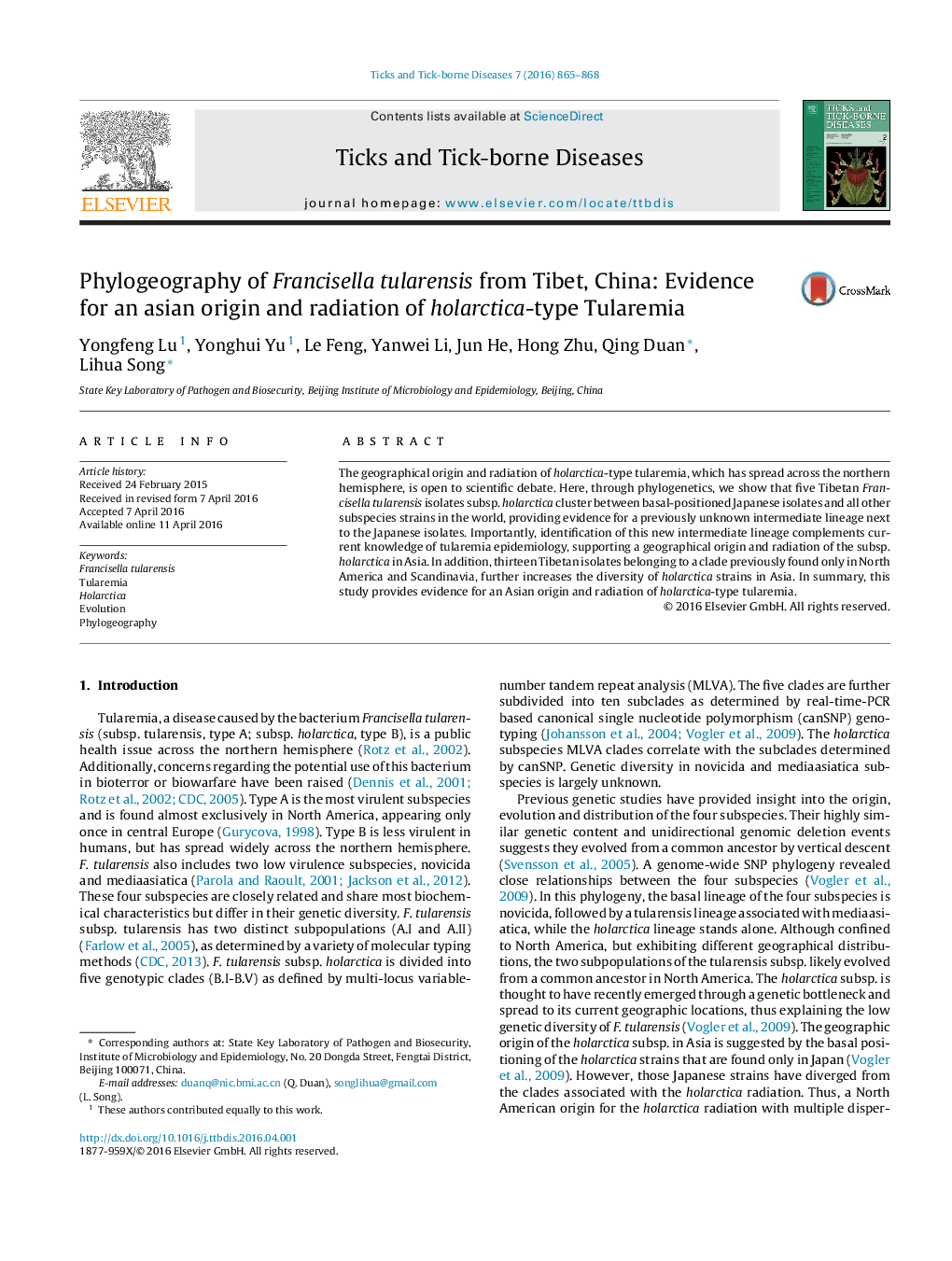| Article ID | Journal | Published Year | Pages | File Type |
|---|---|---|---|---|
| 5546404 | Ticks and Tick-borne Diseases | 2016 | 4 Pages |
The geographical origin and radiation of holarctica-type tularemia, which has spread across the northern hemisphere, is open to scientific debate. Here, through phylogenetics, we show that five Tibetan Francisella tularensis isolates subsp. holarctica cluster between basal-positioned Japanese isolates and all other subspecies strains in the world, providing evidence for a previously unknown intermediate lineage next to the Japanese isolates. Importantly, identification of this new intermediate lineage complements current knowledge of tularemia epidemiology, supporting a geographical origin and radiation of the subsp. holarctica in Asia. In addition, thirteen Tibetan isolates belonging to a clade previously found only in North America and Scandinavia, further increases the diversity of holarctica strains in Asia. In summary, this study provides evidence for an Asian origin and radiation of holarctica-type tularemia.
